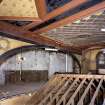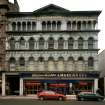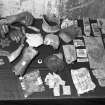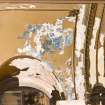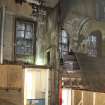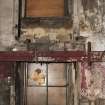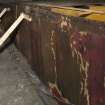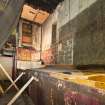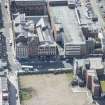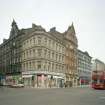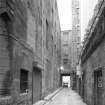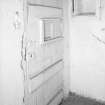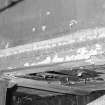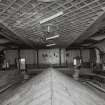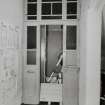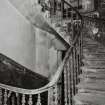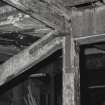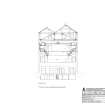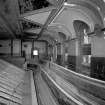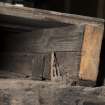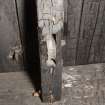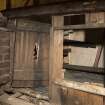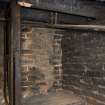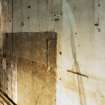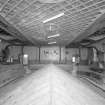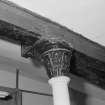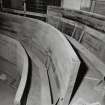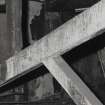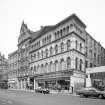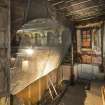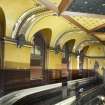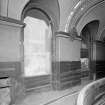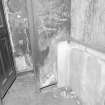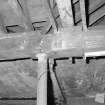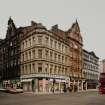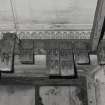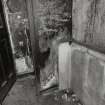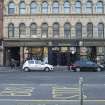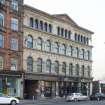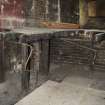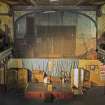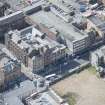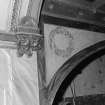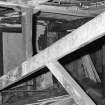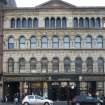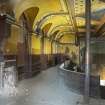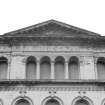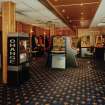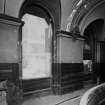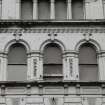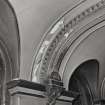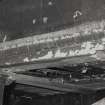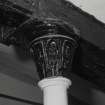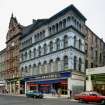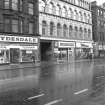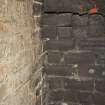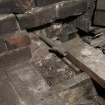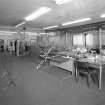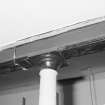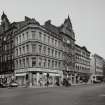Pricing Change
New pricing for orders of material from this site will come into place shortly. Charges for supply of digital images, digitisation on demand, prints and licensing will be altered.
Glasgow, 109-121 Trongate, Britannia Music Hall
Cinema (20th Century), Music Hall (19th Century), Theatre (19th Century)
Site Name Glasgow, 109-121 Trongate, Britannia Music Hall
Classification Cinema (20th Century), Music Hall (19th Century), Theatre (19th Century)
Alternative Name(s) 9 New Wynd; Britannia Theatre; Panopticon
Canmore ID 139671
Site Number NS56SE 205
NGR NS 59452 64918
Datum OSGB36 - NGR
Permalink http://canmore.org.uk/site/139671
First 100 images shown. See the Collections panel (below) for a link to all digital images.
- Council Glasgow, City Of
- Parish Glasgow (City Of Glasgow)
- Former Region Strathclyde
- Former District City Of Glasgow
- Former County Lanarkshire
In March 2015, a toilet block built on the stage level was removed and the earlier stage level underneath and wall to rear were revealed for the first time in c.50 years. The stage is raked and there is evidence of both rope holes and pulleys likely for moving scenery. The discontinued gas pipe may well have been for footlights. It is unlikely that this is the earliest stage as stages were regularly either wholly or partially replaced, but is most likely to date from the early C20th and has suffered extensive fire damage.
CAJS 2015.
NS56SE 205 59452 64918
ARCHITECT:
Thomas Gildard (Gildard and MacFarlane) frontage (c.1857)
Was functioning as a music hall by 1868.
(Undated) information in NMRS.
Publication Account (2006)
The Britannia has a complex history, built within the confines of a commercial warehouse, signs of which are still evident; it began in the 1850s as Campbell’s Music Saloon, an early, unlicensed ‘song and supper’ room style of music hall. These halls usually developed out of pubs, with benches and tables for eating, and a high narrow stage for the entertainers.
The Gildard and Macfarlane facade dates from c.1857, though the interior has had a succession of later additions and alterations. In the early 20th century the hall was taken on by A E Pickard, whose zoo was next door. Pickard extended his menagerie into the basement of the renamed Panopticon and used the attic spaces for his booths of waxworks and human curiosities. By the 1920s it had become the Tron cinema, but by the 1930s the cramped space had fallen far from fashion and the hall closed.
RCAHMS recorded the A-listed hall in 1998 as a Threatened Building. At that time the lower floor was used as a shop store and a false ceiling had been inserted at gallery level. This insert has now been removed and the all opened up. Original and early paintwork has been uncovered and RCAHMS has returned to make a further record.
The future of the building is still far from certain.
Informatin from 'Royal Commission on Ancient and Historical Monuments of Scotland: Commissioners Field Guide 2006'.
Note (October 2017)
The Lost World of Music Hall
Thousands walk past it every day. Most will register the amusement arcade and the traditional sweet shop on the ground floor; some might glance up, checking for rainclouds, and briefly note the ornate Italianate façade, but only a very few seem to be aware of the treasure inside. You enter through a side door hidden down a lane to one side, and up the stairs, stepping into the dim light of the auditorium. As your eyes adjust, you pick out elegant scarlet-painted pillars supporting the impressive sweep of the timber balcony, and the ornate ceiling above. Around the stalls are displays of memorabilia from the great days of music hall, and in the centre a few rows of chairs set out to face a temporary screen remind you that this is indeed a functioning theatre. From the back, a voice hails a greeting, and you cross the floor to find a volunteer custodian, sitting on a sofa with his banjo, who will tell you the story of this extraordinary place.
Originally a warehouse, in the 1850s the building was spruced up by the architect Thomas Gildard, who added the ornate façade of arched windows, and created the auditorium, with a grand horseshoe balcony and ornate decoration. In 1857 it opened as Willie Campbell’s Singing Saloon, shortly renamed the Britannia Music Hall. It was a huge success, packing in audiences of 1,500 for several shows a day. Harry Lauder topped the bill here, Stan Laurel began his career on this stage and, it is said, a teenage Cary Grant won a talent competition at the Britannia.
In the early twentieth century the theatre was acquired by a larger-than-life entrepreneur named Albert Ernest Pickard, who owned a waxworks and museum of curiosities next door, and it was relaunched in 1906 as the Britannia and Grand Panopticon. The east end of Glasgow was now offered a whole range of entertainments under one roof – the original theatre, the waxworks, a zoo in the basement (the bear escaped, first to the roof and then onto the street), and such delights as a Stuffed Merman, a Human Spider and Leonine the Lion Faced Lady.
In the 1920s, facing competition from the movies, Pickard converted the Britannia to a cinema, but business declined, and the building was sold in 1938 to a tailors business, a false ceiling was constructed across the auditorium at balcony level and the theatre became a storeroom, gradually slipping from the city’s memory. Its rediscovery is due to historian Judith Bowers, who in 1997 persuaded the owner to allow her access and realised that much of the original theatre survived. A Trust was established to work towards restoration, and now the building once more hosts variety shows, silent movies and other entertainments. It is open for viewing each afternoon from Tuesday to Saturday, so you should go and marvel at this jewel. However, until the Trust can raise funds for some heating, be sure to take a coat.
Who’s the oldest of them all?
The Britannia, as I have said, lays claim to being the oldest working music hall in the world. This accolade, however, is not undisputed, and a rival has been trumpeted recently on prime time national television! At the beginning of the current series, BBC’s Strictly Come Dancing (itself a heritage event!) gave us some background on this year’s contestants. The cameras followed one actor around East London, looking in at Wilton’s Music Hall, which he proclaimed as “the oldest functioning music hall in the world”. Well! That’s a bold claim, I thought so I returned to the Britannia last month, and was confidently reassured that our Glasgow venue is indeed older by a year. Certainly, Wilton’s are well ahead with their restoration work, and has benefitted from excellent patronage but, with help from all of us, the Britannia too can return to its former glory at the heart of this most Victorian of cities.
Eve Boyle - Communities Liaison Manager










































































































